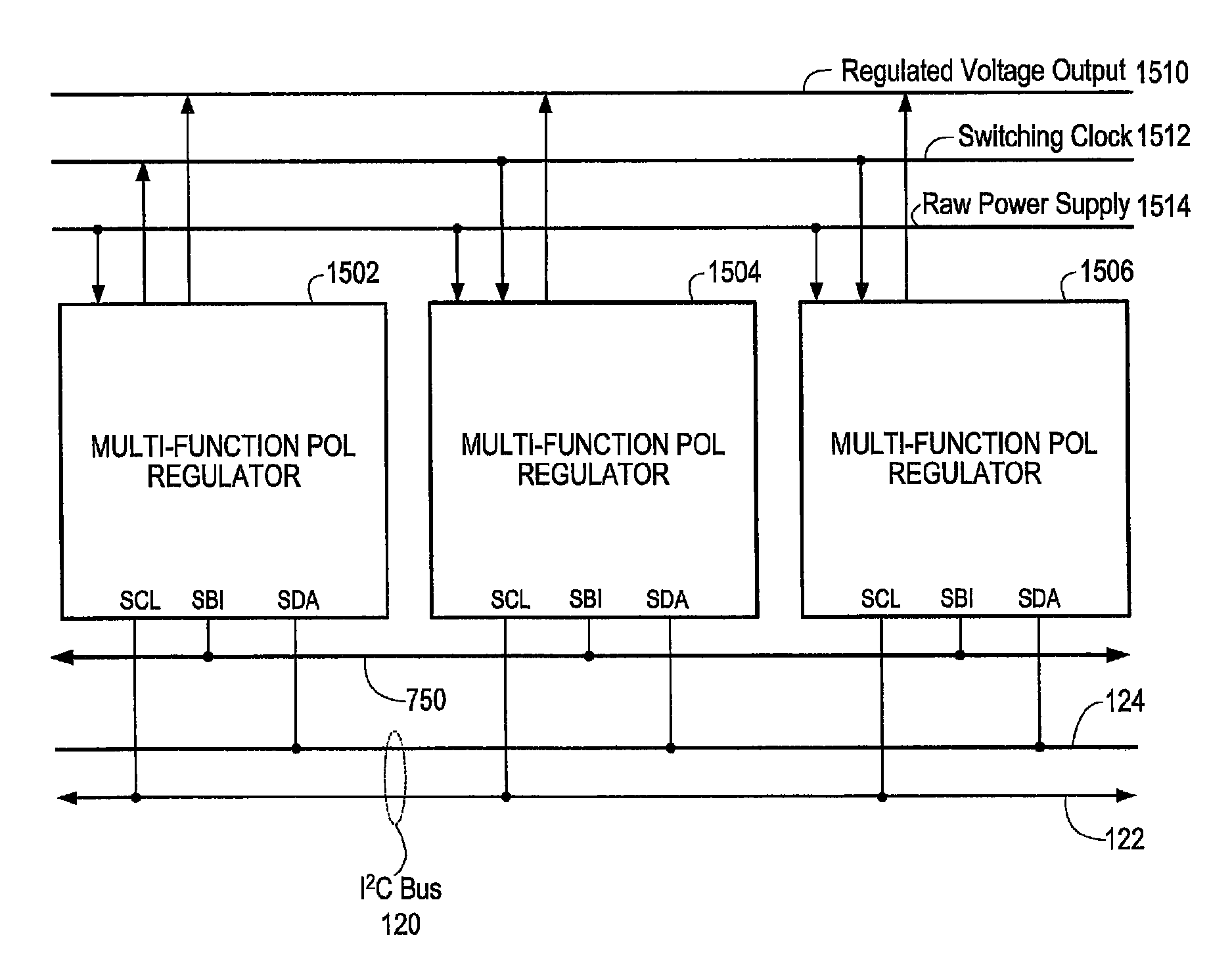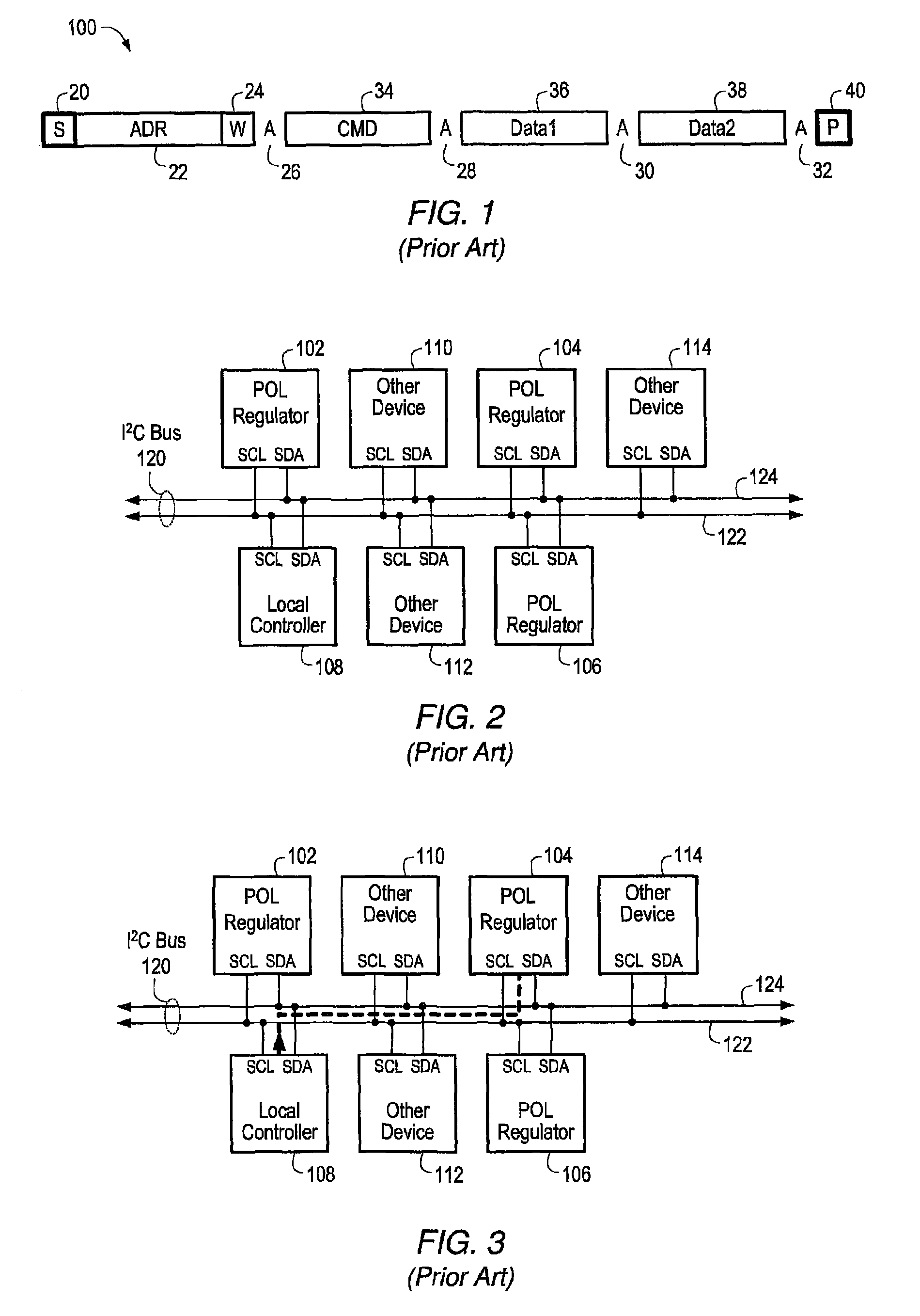Power management system using a multi-master multi-slave bus and multi-function point-of-load regulators
a power management system and multi-master technology, applied in the direction of electric variable regulation, process and machine control, instruments, etc., can solve the problems of mismatch between the respective output voltages of the pol regulators, the power supply design has become a much more critical and difficult task, and the failure to meet the requirements of the power supply, etc., to achieve the effect of maintaining compatibility
- Summary
- Abstract
- Description
- Claims
- Application Information
AI Technical Summary
Benefits of technology
Problems solved by technology
Method used
Image
Examples
Embodiment Construction
[0048]As used herein, a device coupled to a bus that is “uniquely identified by an address” refers to a device identified by an address or addresses that are not shared with any other device that is also coupled to the bus. That is, the address that identifies a specified device does not identify any other device. However, more than one address may uniquely identify a single device. For example, a device may be uniquely identified by address ‘34ef45’ and also by address ‘34ef44’, but neither ‘34ef45’ nor ‘34ef44’ may identify any other device. Furthermore, “targeting an address” during a bus operation refers to initiating the bus operation addressing a device uniquely identified by the address. For example, if a first device coupled to the bus has a specified first address that uniquely identifies the first device, and a second device initiates a write operation “targeting the specified first address”, then the address information transmitted by the first device as part of initiatin...
PUM
 Login to View More
Login to View More Abstract
Description
Claims
Application Information
 Login to View More
Login to View More - R&D
- Intellectual Property
- Life Sciences
- Materials
- Tech Scout
- Unparalleled Data Quality
- Higher Quality Content
- 60% Fewer Hallucinations
Browse by: Latest US Patents, China's latest patents, Technical Efficacy Thesaurus, Application Domain, Technology Topic, Popular Technical Reports.
© 2025 PatSnap. All rights reserved.Legal|Privacy policy|Modern Slavery Act Transparency Statement|Sitemap|About US| Contact US: help@patsnap.com



